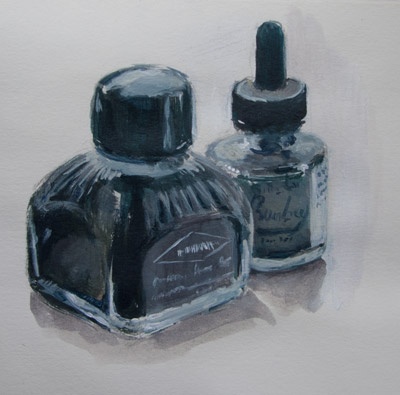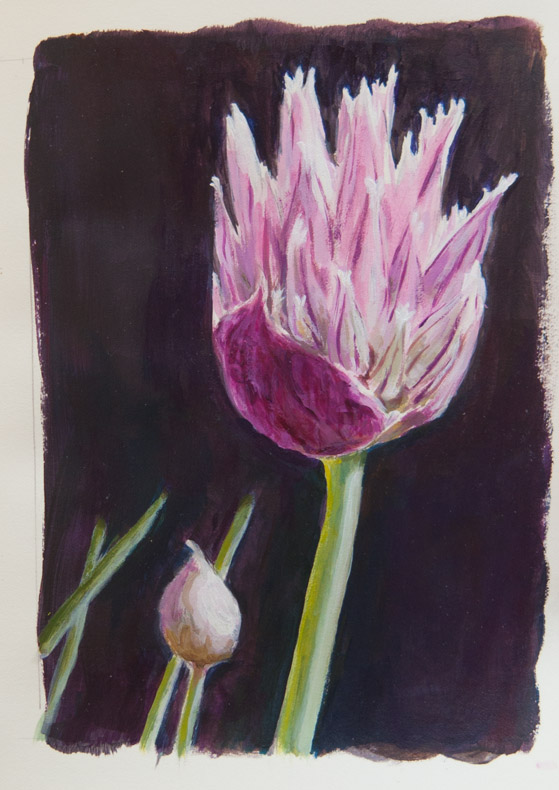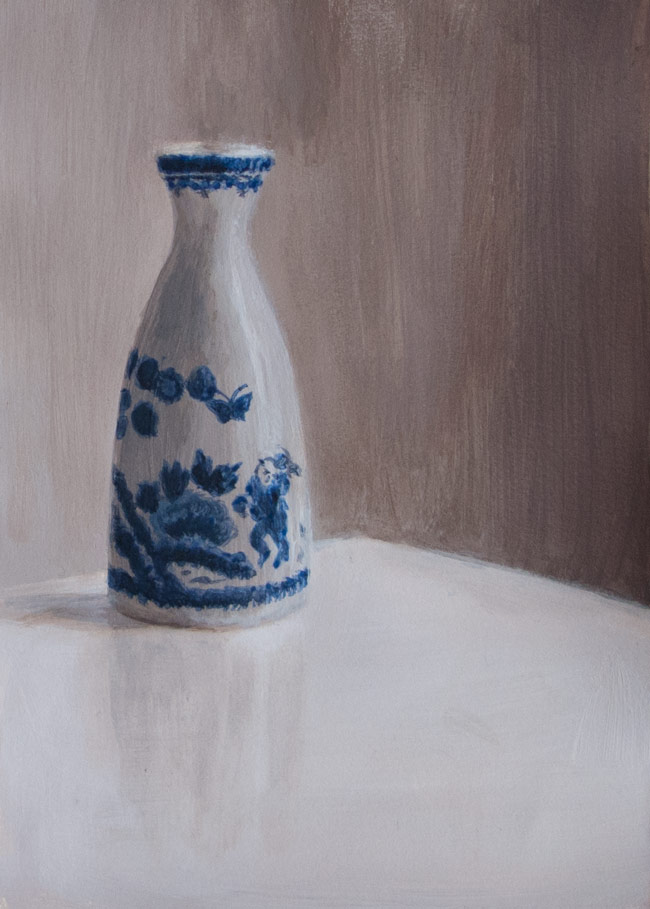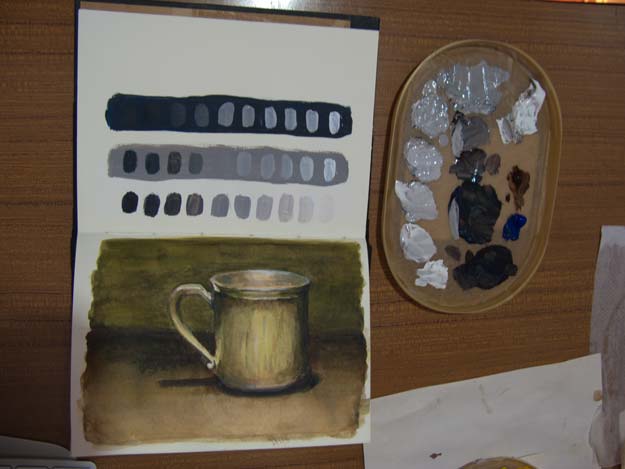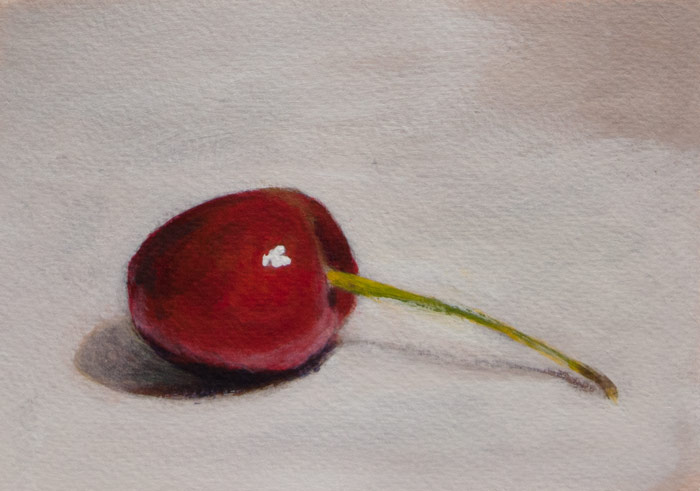Painted in acrylic from an old magazine cutting taken from an article about Tibet. It looked like such a satisfying moment.
The photo in the cutting was so dark that the figure was just a silhouette. I had to take it into Photoshop to bring out enough detail to paint. In some ways this made it easier as the noise-filled image was already broken down into large blocks of colour, the digital equivalent of squinting – another example of how a poor reproduction can make a good practice subject.

